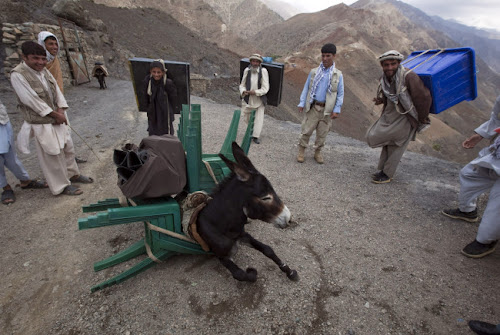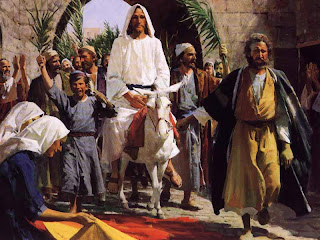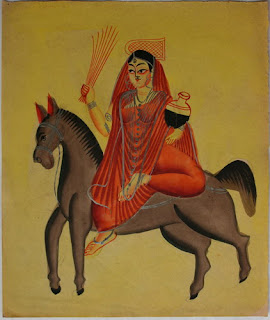
Picture: Laughing at the collapsed donkey,Afghanistan.
Donkeys in Tamil and Sanskrit Literature
Donkey is the animal that got most negative publicity in classical Indian literature. Some animals like cow and elephant are elevated to the position of sacred animal. Lion is the unquestionable king of the forest. Bull, Tiger and Lion are used in addressing Vedic and Epical characters. Rama is called the Tiger among men in Venkateswara Subrabatham. Kings called themselves lions (sing or Kesari which became Caesar in Europe). But poor vegetarian donkey is considered a dirty animal. George Orwell is right when he said ‘’All animals are equal, but some are more equal than others’’ in his novel Animal Farm.
The strange thing about donkeys is that they were vehicles of Vedic gods Indra and Agni in Atharva Veda. But later became the vehicle of Jyeshta (Muthevi) and Shitala Devi (Goddesses of poverty and disease). They were relegated to back stage. Greek gods Dionysus and Hephaestus used donkey as their vehicles. Jesus rode into Jerusalem victoriously on a donkey according to Gospel of Mathew.

Picture of Jesus riding into Jerusalem.
Donkey plough of Tamil and Orissa Kings
2000 year old Sangam Tamil literature and Kharavela’s Hathikumbha inscription have some strange coincidence. When the kings conquer some new countries, they destroy the towns and plough the land with donkeys. This strange custom existed throughout India. Sangam Tamil books Purananuru (verse 15, 392), Pathitru pathu (25) say that the Pandya king Muthukudumi Peuvazuthi , a local chieftain Pokuttezini and Cheran Selkezu Kuttuvan defeated their enemies and ploughed their lands with donkey ploughs. Avvaiayar, Palai Gauthamanar and Nettimaiyar sang in praise of those kings. According to Kalinga (Orissa) King Kharavela’s inscription, he did the same in Pataliputra and Rajagiri. He broke the 100 year old Tamil Federation and did use a donkey plough in a Tamil port. Pandya king sent him gems, elephants and horses as tribute.
Kharavela (2[SUP]nd[/SUP] century BC) was one of the just kings of India who commanded respect from every one. He was a Jain and ruled a large part of India. Through his inscriptions we know a lot about ancient India.

Picture of Shitala Devi
Donkey procession for Criminals
Now and then we read news items in Indian news papers about criminals taken in procession around the town on donkeys with red and black spots painted on their faces. This is also an ancient punishment followed by Indians for thousands of years. We read about it in Sanskrit literature. Nowadays it is followed in North Indian villages.
Even the Tamil proverbs are against donkeys. Parents use the names of donkeys and dogs to scold their children. From ancient times these animals are used to carry heavy luggage such as salt and pepper and Sangam books Akananuru (verse 89) and Perumpanatrupadai ( line 80) confirm this. But in other parts of the world even Jesus used it because it was considered a humble animal compared to arrogant horse.
Donkey Curses
Another interesting area is the curses in the epigraphs and inscriptions. Those who violate the instructions or damage the gifted articles are cursed to go to hell that is meant for copulating with donkeys. Unnatural sexy sculptures and diagrams accompany such inscriptions.
Donkey demons are painted in Mycenaean culture. The frescoes of demons with donkey heads belong to 1500 BC.
Donkeys in Vedic period
I have already written about it in one of my posts on Vahanas (Mounts of Gods). I am reproducing it here:
Hephaistos is an Olympian God in Greece. He rides a donkey. Donkey is Vahana for Hindu Gods and Goddesses as well:
Donkey Vahana for Indra: A.V. 9-6-4
Donkey vahana for Agni: Aitareya Brahmana 4-9-1
Donkey Vahana for other Gods: AV 8-8-22
Jyeshta or Muthevi or Seetala Devi have donkey has her Vahana.
In western countries, people have started charities for abandoned donkeys. They look after them well.
